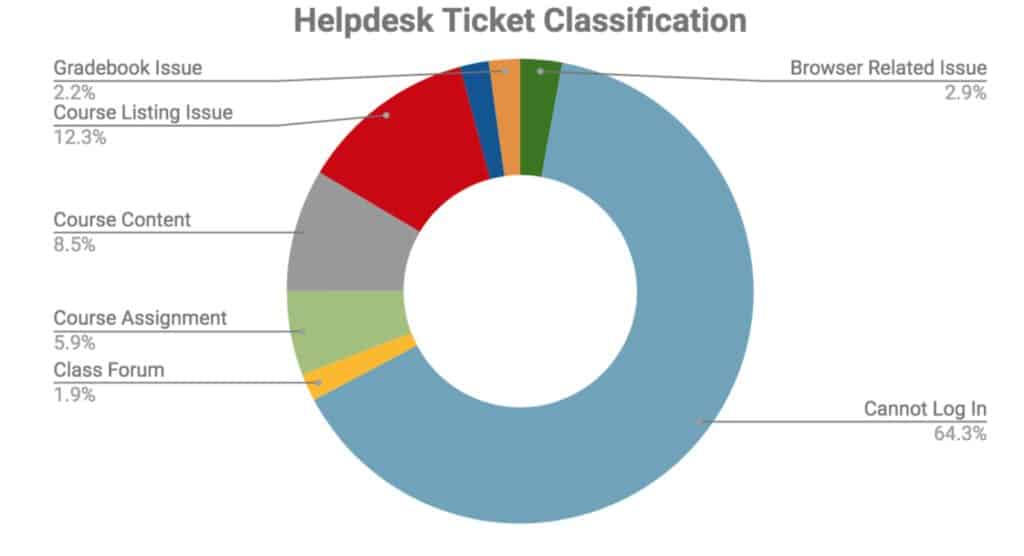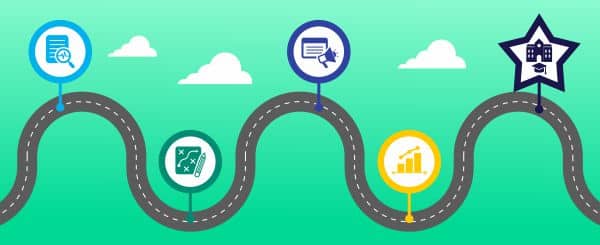The University’s Guide to Online Education
Well before COVID-19 disrupted higher education, online education was steadily on the rise. Even though online degrees represented less than 4% of the global higher education market before the pandemic, they still constituted one of its fastest-growing segments. Online-only students currently make up about 15% of all higher education enrollment, but that is rapidly changing as universities are forced to adapt to the new normal.
COVID-19 accelerated the need for online education, and many institutions were left unprepared, uninformed, and struggling to keep up with the competition.
Faculty, staff, leadership, learning designers, and other key individuals on campuses have been hard at work since early March to ensure the shift to online is as seamless as possible and the integrity of the learning experience remains intact for students.
Archer Education, Ease Learning, and InsideTrack have teamed up to present a proven framework for education professionals as they navigate the online program development process.
Whether you’re a faculty member, dean, provost, learning designer, marketing director, or enrollment coach, you need to have a solid understanding of what’s required to design and develop highly engaging enrollment marketing, enrollment coaching, and online learning experiences that exceed student expectations and deliver learning outcomes that rival the campus-based learning environment.[/vc_column_text]
Conduct Research on the Online Higher Education Landscape
When considering launching a program in the online higher education landscape, you must conduct initial research to set the groundwork for your program’s success.
Conducting an audit of your internal resources will help you decide how to allocate budget and resources for a new online program.
Assessing program feasibility is another key step universities must take prior to a program launch. Without this step, you may run the risk of launching a program that will never be successful. During this step, you should gather information on the details of the program (e.g., degree level, concentrations, desired learning outcomes, and any certifications that the program prepares students for), as well as the admissions requirements (e.g., prior degrees earned, prerequisites, GPA, standardized test scores, and work experience).
When you look at the whole picture of how a student enters the program and what they get out of it, you start to see whether or not the program will be a success. For example, if you were to launch an MBA program with no concentrations but with high barriers to entry (e.g., 15-plus years of related work experience and a GMAT requirement), you would likely encounter great difficulty obtaining students. Prospective students could easily find another program in which they could specialize and enroll earlier in their careers without taking a standardized test.
To develop a budget forecast, you need a few things: the budget, the enrollment goal(s), and the historical lead-to-student conversion rate for the specific type of program. Ideally, you would have that conversion rate broken out by each marketing channel.
Develop Course Design and Measurement Strategies
Once you’ve accomplished the steps described above, it’s time to develop a program that meets your institution’s academic standards and your students’ experience expectations. Your institution has an established core identity for on-campus learning, but chances are you have not fully defined the student experience for your online program. Additionally, you will want to track and measure student performance and provide student support throughout the entire student journey.
Ease Learning has developed a family of products and services that focus on developing measurable, effective, and scalable online learning programs: The Learning Framework helps ensure intentional design is at the foundation of any program, Ease Learning Skillways helps track and measure performance, and Ease Learning Helpdesk provides additional student support.
The Learning Framework
When you make the move to online, you need to create a branded student experience that captures the essence of what makes your institution unique, differentiates your programs from others, and supports your students along their journey. The Learning Framework identifies the critical elements:
- Pedagogy: What is the persona of the student? What are their needs/expectations? What type of assessments will drive the experience? How can you ensure collaboration? What are the goals of the course and program? How can you ensure workforce alignment? How can you ensure that students can apply their new skills and that students are engaged in active, not passive, learning — the kind of learning that leads to higher-order thinking and a deeper level of skill attainment? How do you make it student-centered and include multiple modes of learning?
- Technology: What are the available tools and tech stack? How do you manifest the journey with these tools? What are the technology gaps? Is there equal access to technology? What level of student insights can you access to help inform continuous improvements?
- Organization: Are you prepared for scale overtime? Are you treating your students as consumers with different needs compared with on-ground students? How are you supporting and encouraging collaboration among the stakeholders? How are you evolving the roles of the different stakeholders (e.g., admissions, enrollment, faculty, technology, and onboarding) to support a fluid experience for students?
Tracking and Measuring Performance
Developing the program is not enough. You need to be able to track and measure the performance of your students, especially with workforce-aligned programs. They need to demonstrate that not only did they acquire new skills but they can apply them. The key to tracking and measuring is to incorporate this as part of the design process. It shouldn’t be an afterthought — something added after the program has been launched. Ease Learning accomplishes this through Ease Learning Skillways.TM
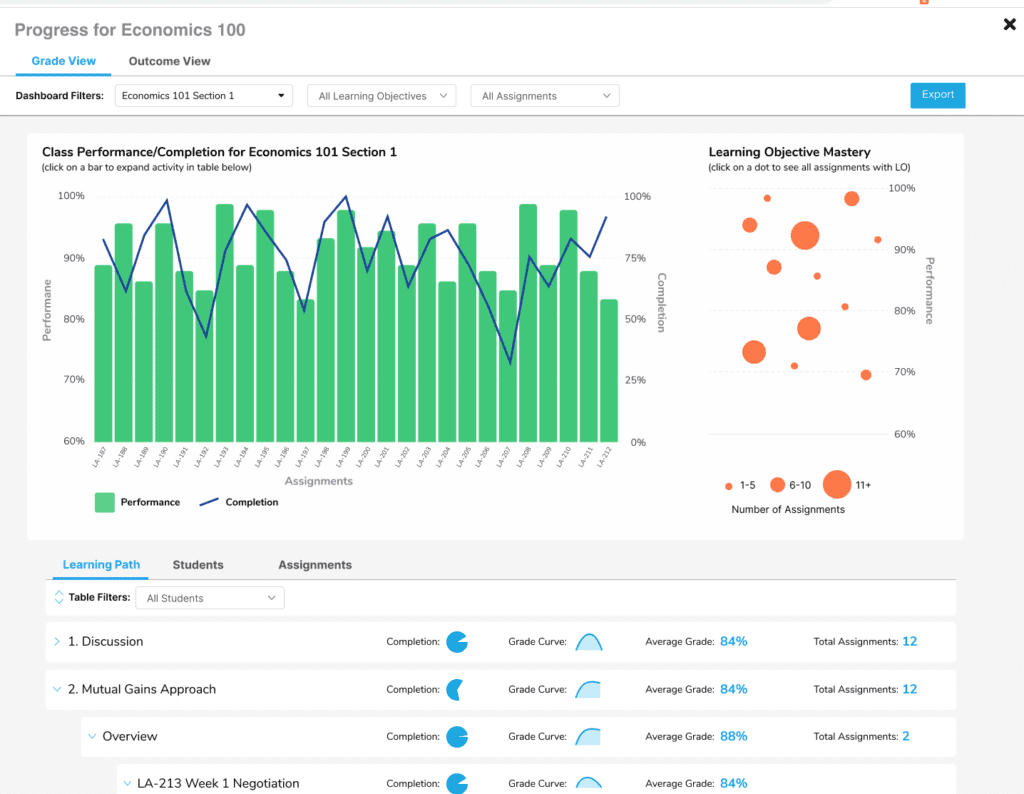
The SaaS platform allows the curriculum to be presented in learning paths that sequence, scaffold, and provide insights into the student’s progress at all points. Learning activities are linked to specific learning outcomes and skills; a set of granular rubric-based performance metrics is associated with each learning task, providing greater insights into student progress and skill achievement. These kinds of metrics offer evidence of student competency that is not traditionally tracked in most learning systems.
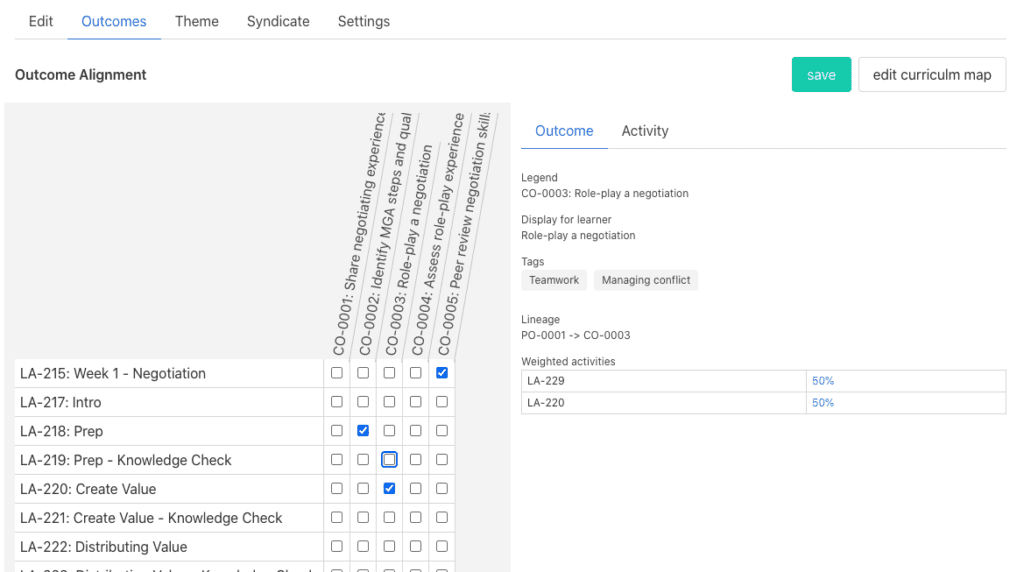
Helpdesk to Measure Gaps for Success
The student experience is the gateway to retention and enrollments. Providing quality support throughout the student journey helps remove the roadblocks that have a negative impact on the experience and lead to dropouts.
There are two main components to consider when providing support: (1) the actual interaction and experience between the student and the support person and (2) how data can be captured and insight gleaned from these interactions to inform improvements to the curriculum, the student experience, and even the overall retention strategy. By developing an understanding of why your students are reaching out to the helpdesk, you can begin to address the root issues and provide systemic improvements to the student experience.
Key Takeaways for Building Course and Measurement Strategies
- Adopt an approach of intentional design that considers pedagogy, technology, and organizational concerns.
- Develop the foundation of measuring student success during the learning design process; align learning activities with outcomes; and develop a rubric that assesses performance throughout the entire student journey.
- Consider how the data from helpdesk interactions can inform program improvements.
Ease Learning can help you as you extend your online programs and reinvent the student experience for the online world. Contact [email protected] to learn more.
Build an Enrollment Marketing Strategy
Once your research has been completed and your courses designed, it’s time to build an enrollment marketing strategy. An enrollment marketing strategy begins with holistically understanding your prospective audience and your own brand, and it ends with leading a student toward a lead form.
Leverage a Robust Discovery Process to Develop Creative and Marketing Assets
Before beginning to lay the foundation for a creative and marketing strategy, you must first engage with key internal stakeholders who are closest to the program in order to effectively understand what the program’s story is, how to best tell it, and which audiences (personas) you should be tailoring it to. During the discovery phase, you should speak with the following people, among others, to help uncover key insights:
- Faculty and school leadership
- Marketing and enrollment teams
- Students and alumni
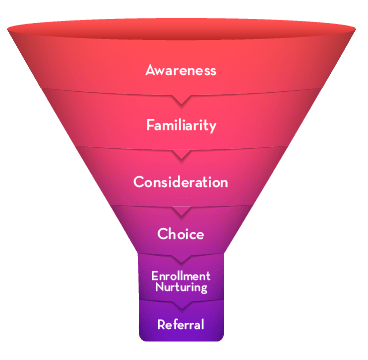
While these conversations should be fluid and tailored to the stakeholder, you should strive to dig deeper into the following general areas:
- The “why” of the program
- The program’s unique value propositions (UVPs) — to help you differentiate it in the marketplace
- Key audiences (or personas) for the program
- Who they are, what they care about, etc.
- Desired outcomes and impact once they graduate
- Any challenges or misconceptions
Once you have a clear understanding of these areas, you can begin to work with your team to develop a story and identity for your program, which includes various creative themes and messaging that can speak to the personas identified in the discovery process. Having a comprehensive guide to help inform and align marketing strategies, learning design, and enrollment coaching will not only create greater efficiencies but, more importantly, provide prospective students with a much more impactful and consistent experience as they work their way down the funnel.
Launch Your Program Website
An informative and user-friendly website is the cornerstone of enrollment marketing for an online degree program. Students must be able to access and navigate your website with ease. To that end, apply best practices surrounding the following elements:
- Website development and user experience
- Conversion rate optimization (CRO)
- Search engine optimization (SEO)
- Branding and creative
- Student journeys
- 508 Compliance and Accessibility
Creating a website includes the following planning steps:
- Discovery to understand program and stakeholder goals
- Competitive analysis of the industry, looking at brand and SEO competitors
- Website planning: wireframes, web copy, sitemaps, navigation, analytics, etc.
- Website launch, audits, testing, and analysis
Implement SEO Launch
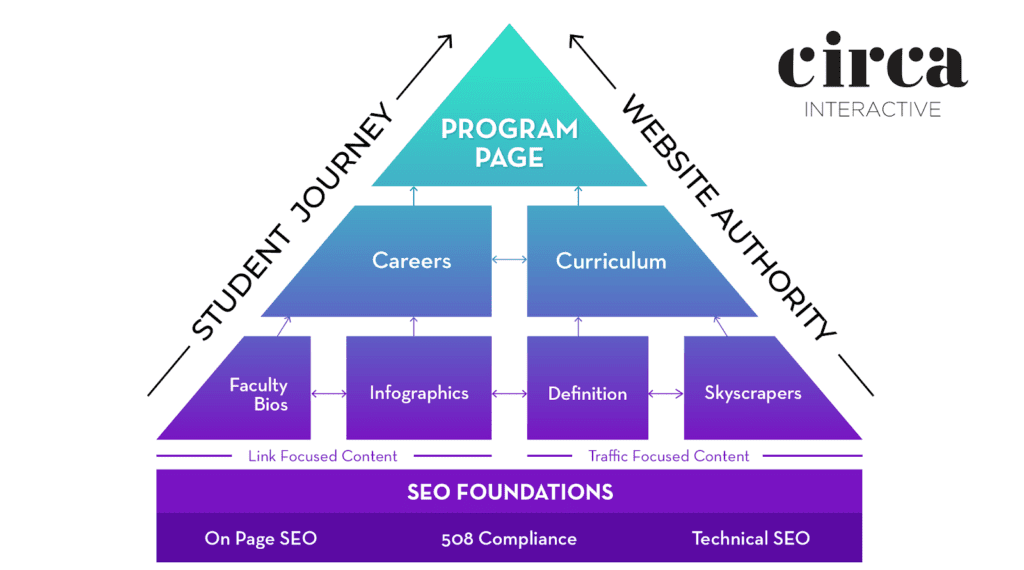
While in the process of launching your website, it’s imperative to lay out the foundation of your SEO strategy. An impactful SEO launch begins with the building blocks: on-page SEO, 508 compliance, and technical SEO.
Once you’ve developed and implemented a foundational SEO strategy, you can begin to consider how to keep your website content and copy up to date and refreshed. Content is a key aspect of driving qualified organic traffic and pushing prospective leads up the funnel toward the program page. Strategic interlinking and off-page SEO are additional tactics to consider when developing an on-going SEO strategy.
An effective SEO strategy can yield some of the highest converting, long-term organic traffic to your website, and is a worthwhile investment for universities.
Implement Paid Launch
Regardless of the size of your budget, it’s crucial that the paid media strategy focus on the target audience, meaning highly relevant users based on their online behaviors. This includes targeting, ad copy, landing pages, and everything in between.
A good strategy does more than just find the right people; it also speaks directly to them by addressing their emotions, especially potentially negative or concerning ones, and provides comprehensive information.
- Think about your most relevant, more actionable audiences first. This way, spend will be highly efficient, leading to quality leads and actual students. Be sure to nurture leads via email uploads to start on display and social channels. Then build a robust suite of remarketing audiences from all web properties to use on multiple channels. Lastly, find as many high-intent keyword variations as possible to maximize search results.
- Focus on your personas. Building large audiences to target on social media will help you find new users who may not be as obvious. Be sure to adjust your copy and creative to speak to them without being creepy.
- Ensure your landing environment answers as many questions as possible. College is an important decision, and potential students will want to know more than just the application deadlines and other general program info. The call to action on the page should be appropriate for your target audience as well (e.g., where are they in the funnel?).
Bonus tip: Be sure to share this strategy with your enrollment team. Paid media is highly targeted, and when executed correctly, the leads will be high quality. The enrollment team needs to be aware of the strategy and experience that encouraged leads to send in their contact information.
Create a Content Strategy
A content strategy is essential for online programs to generate organic traffic, establish brand authority and awareness, and guide students down the student journey funnel.
A good content strategy includes a mix of link-building content and standard content. Content should speak to the prospective student at the level they’re at and should be based on a keyword optimization strategy.
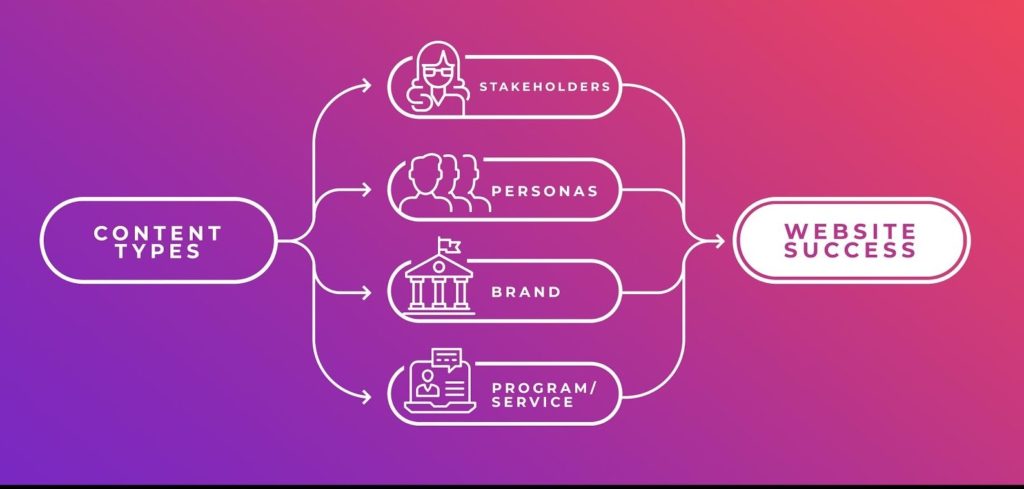
We’ve found success including content from the following buckets:
- Stakeholders
- Stakeholders include program faculty members who can be featured in interviews or profiled content. These pieces are important for generating brand awareness and allowing students to connect with their future professors.
- Personas
- Persona content covers career outcomes, industry terms, or trending current events. These pieces should speak to various personas you’ve outlined in your creative stage.
- Brand
- Branded content emphasizes a unique aspect of the university or brand. For example, if you’re a women-centered university, then your content strategy may want to include topics about women in leadership.
- Program/Service
- Your content should be highlighting the program and enticing students to further explore the curriculum. By pulling topics from course descriptions, you can make sure you’re showcasing the program’s uniqueness and creating strategic interlinking opportunities.
Engage Faculty With Digital PR
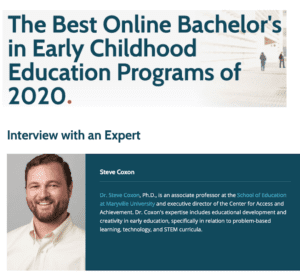 Digital PR has emerged as a powerful tool for generating exposure and establishing credibility online. Forging strong relationships with journalists, editors, bloggers, and other producers of digital content can help to amplify your school’s unique story, reach larger and higher-quality audiences, and engage faculty to help promote the program’s brand and thought leadership.
Digital PR has emerged as a powerful tool for generating exposure and establishing credibility online. Forging strong relationships with journalists, editors, bloggers, and other producers of digital content can help to amplify your school’s unique story, reach larger and higher-quality audiences, and engage faculty to help promote the program’s brand and thought leadership.
To be successful, you will need to have:
- A minimum of three to four faculty members who are willing to participate
- Engaged faculty members who are willing to dedicate one to two hours a month to media opportunities
- A clear and in-depth understanding of faculty members’ expertise and passions relating to their work
- A consistent pulse on industry trends and national/international news developmentsIt’s key to be able to relate each faculty member’s expertise to topics being discussed in the media to make their expertise as relevant and enticing as possible to the media.
- An editorial team or a ghostwriter who can help to scale opportunities and assist faculty members with any potential op-ed opportunities
Key Takeaways for Building an Enrollment Marketing Strategy
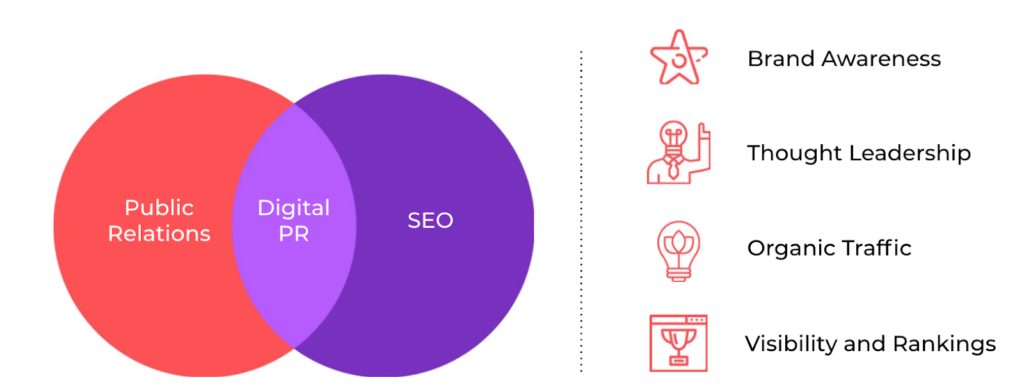
- Engage with key internal stakeholders who are closest to the program in order to effectively understand the program’s story.
- Develop an informative and user-friendly website, which is the cornerstone of enrollment marketing for an online degree program.
- Work with your paid media and SEO teams to establish a marketing strategy that includes organic conversion and content strategy.
Archer Education can help your university establish a new way of thinking in enrollment marketing. Archer has helped more than 200 degree programs increase lead flow, build lasting brand awareness, and generate more students. Contact us to learn more.
Support Online Students in the Enrollment Journey and Beyond
Long before COVID-19 became part of the daily vernacular, online programs were one of the few areas of higher education experiencing growth. With the one-two punch of campus shutdowns and economic recession, more displaced workers are looking to upskill, and recent high school graduates are considering online learning — making online student support more imperative than ever.
Help Your Students — and Your Institution — With Enrollment Coaching
InsideTrack Prospective Student Coaching creates sustained engagement right from the point of inquiry and provides institutions with “voice of the prospect” insights. Students who receive coaching are more likely to enroll, select the program that best fits their needs, remain in school, and ultimately graduate. For example, InsideTrack’s coaching program helped Penn State World Campus improve in enrollment conversion by 46%.
Create Different Support Strategies for Online Students
Adult and professional students face a unique set of challenges when considering online education — challenges requiring a specialized type of support. As such, you should consider how you will approach the following support goals when developing an online degree program:
- Developing different support strategies for adult students who are juggling multiple commitments
- Providing career-forward student support to ensure students can leverage their education for professional development
- Re-enrolling stopped-out students by proactively addressing the factors that prompted them to leave school without a degree
- Keeping online students engaged without the structure and face time of a traditional university digital world
At InsideTrack, coaches use the Focus Wheel as an assessment tool that helps students better understand their higher education journey holistically in eight key areas that directly impact their success, including academics, finances, health, and commitments. For online students, the challenge is often making time for school in between family, work, and other obligations.
Build a More Effective, Scalable Student Support Program
InsideTrack Capacity Building improves student outcomes and staff capabilities while building a program to sustain these advances in-house. Building on program strengths and breaking through organizational silos helps institutions create a more student-centered experience that enhances the lifelong success of every student.
Capacity Building takes a phased approach that produces an immediate impact on enrollment while simultaneously creating a model for self-sustaining future success. We worked closely with Old Dominion University to increase its retention rate and resulting revenue. The university saw a 5.5% increase in yield, an 18.7% increase in its first-year retention rate, and $6.9 million additional revenue.
Key Takeaways for Building an Enrollment Coaching Strategy
Our proven coaching methodology is at the heart of everything we do — and aligns perfectly with our nonprofit mission of driving positive social impact through the transformative power of education. All services are backed by strong program and change management support to help you maximize your results. By partnering with InsideTrack, you can expect to
- Positively impact the students receiving coaching
- Generate insights on how to improve the experience and outcomes for all students
- Complement and enhance the value of what you’re already doing
- Provide support throughout the student lifecycle
- Leverage the value of technology and analytics to provide tailored support at scale
Ready to create a customized coaching program that gets results? Start here.InsideTrack Prospective Student Coaching creates sustained engagement right from the point of inquiry and provides institutions with “voice of the prospect” insights. Students who receive coaching are more likely to enroll, select the program that best fits their needs, remain in school, and ultimately graduate. For example, InsideTrack’s coaching program helped Penn State World Campus improve in enrollment conversion by 46%.
How Learning Design, Enrollment Marketing, and Enrollment Coaching Work Together
Enrollment marketing and enrollment coaching work hand in hand to move potential applicants down the enrollment funnel. A lead may enter the pipeline with very little information, or they may be ready to apply right away. It’s important that your enrollment marketing communication plan be segmented such that the enrollment team can speak to anyone on that spectrum to learn more about their goals to understand if the program is a fit for them. On the other hand, if an enrollment coach meets a student through an event, a visit, or another in-person or virtual meeting and is able to gather their information, the enrollment coaching team should be working closely with the enrollment marketing team to understand how it will be nurturing that lead across channels.
It’s vital that enrollment coaches look at how enrollment advisors are converting leads from one stage to the next. Having granular status options provides an easy way for the coach to see where students are dropping out of the pipeline and make decisions based on their analysis.
For example, if an enrollment team for an MBA program just has a status of “unqualified,” that won’t tell it much. If there were status conditions under the “unqualified” bucket, such as “unqualified: low GPA,” “unqualified: no bachelor’s degree,” and “unqualified: no work experience,” then the enrollment coach would be able to better assess why leads aren’t moving forward. The outcome of that assessment may require the marketing team to adjust targeting for lead generation purposes.
Another example, if an enrollment team has detailed status conditions for why a potential student didn’t choose a program, it would be able to adjust its communication plan to speak to those topics, (e.g., financial aid, learning platform, faculty, or what makes the program unique).
The learning design of a program is valuable for potential students to understand, especially for those shopping other programs. Potential students are interested in user-friendly interfaces, unique and interactive software, rich course content, adaptability for student variability, etc. If the learning design is one-dimensional and difficult to use, students will be less likely to engage and complete the program. A lot of potential students ask to “try out” a course before they enroll for this very reason.
Let Us Help You Build a Successful Online Degree Program
COVID-19 has disrupted plans for many higher education institutions. If you’re struggling to launch your online degree programs, we can help.
Archer Education, Ease Learning, and InsideTrack can help your university conduct research on the competitive online higher education landscape, develop your course designs, build an enrollment marketing strategy, and support students all the way down the enrollment path.[/vc_column][/vc_row]
Want to Learn More? Tune into our Webinar Series!
For more information on how to create a great online learning experience for students, join InsideTrack, Ease Learning, and Archer Education for a free professional development series focused on improving the online learner’s experience. The series is designed to help educational leaders successfully deploy and grow online degree programs.
